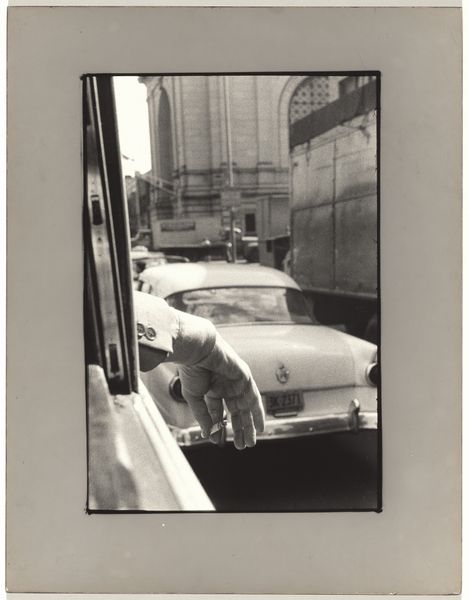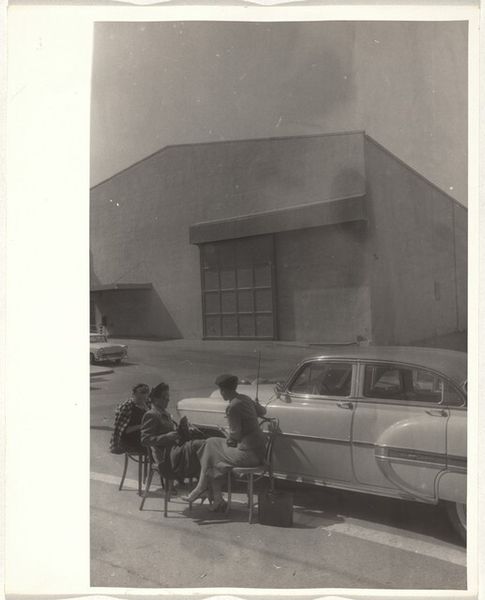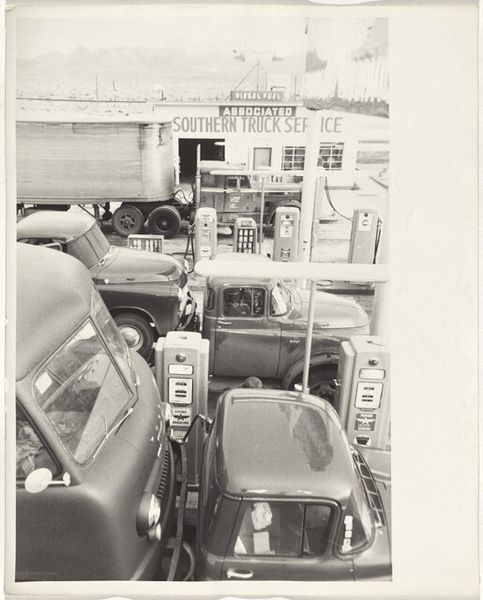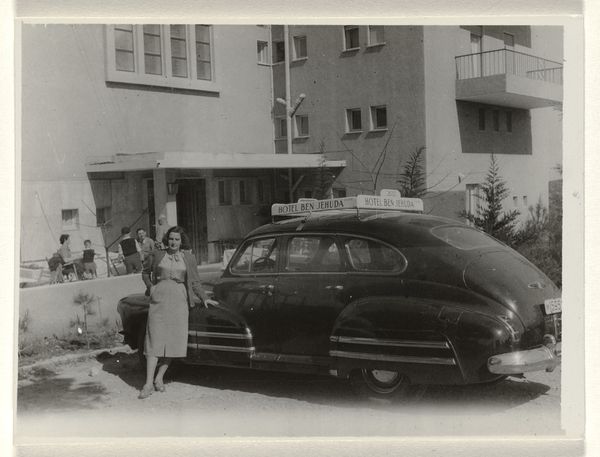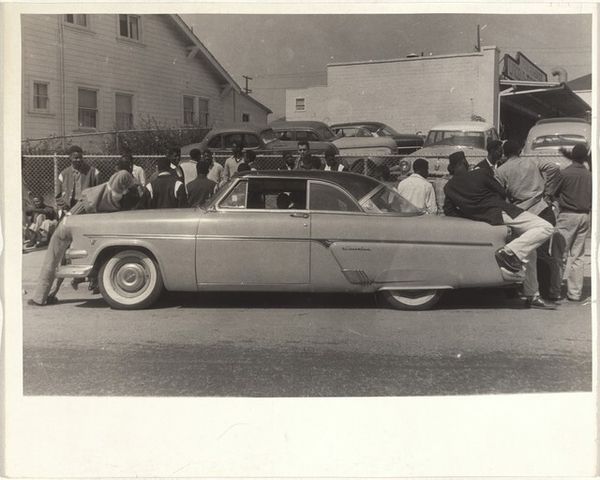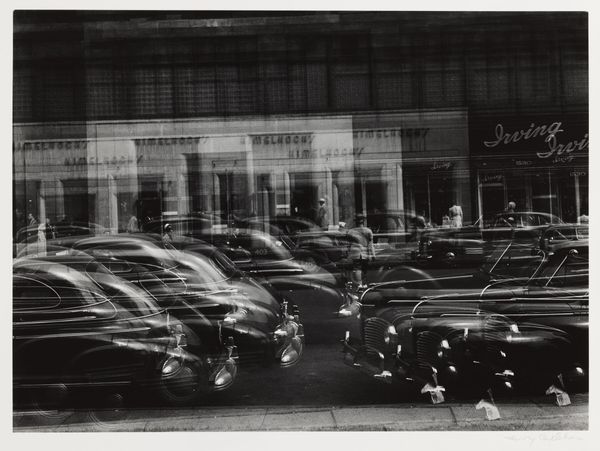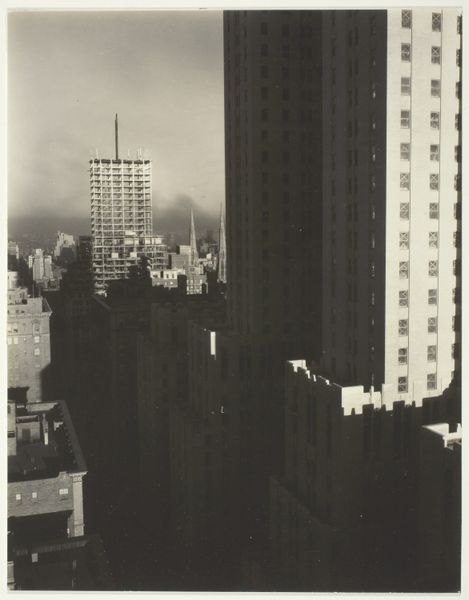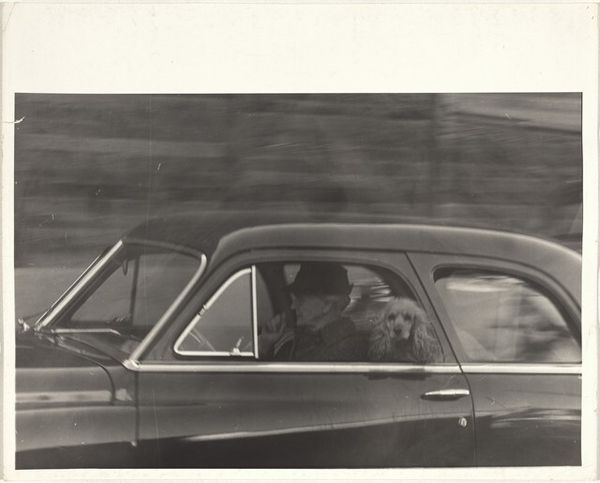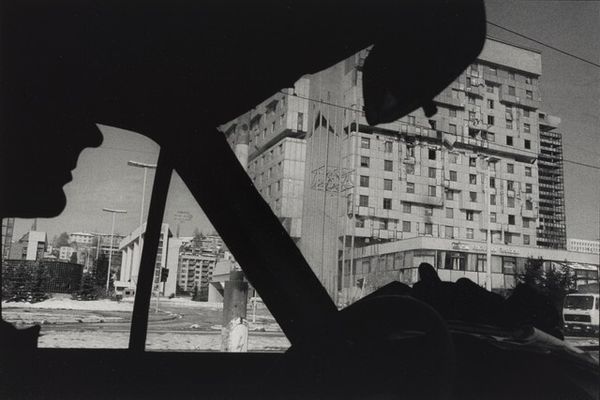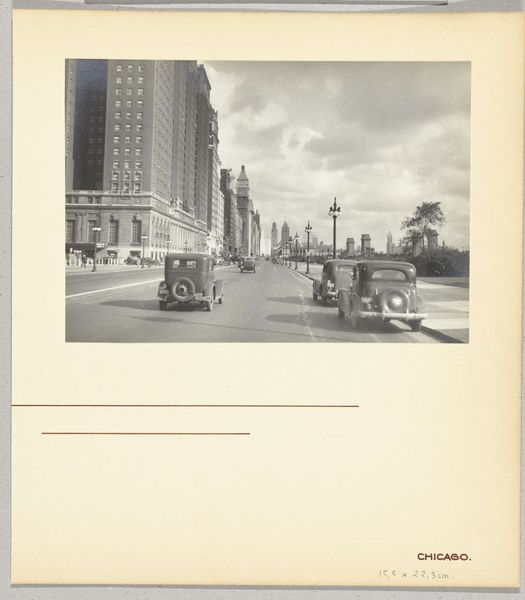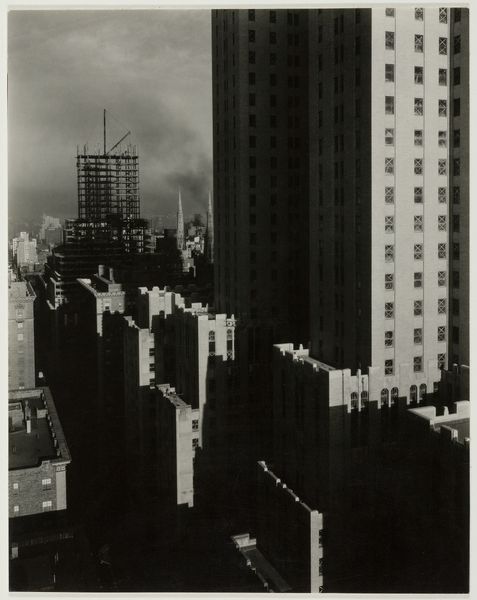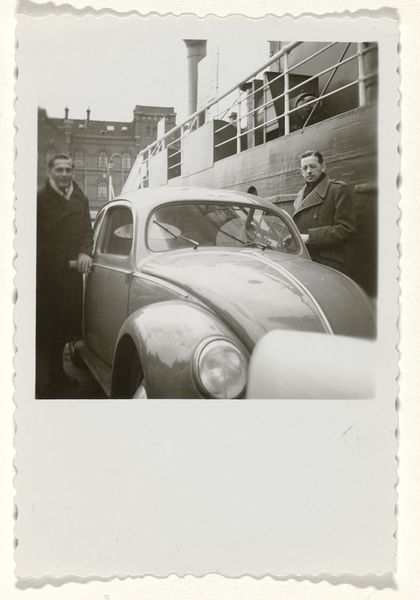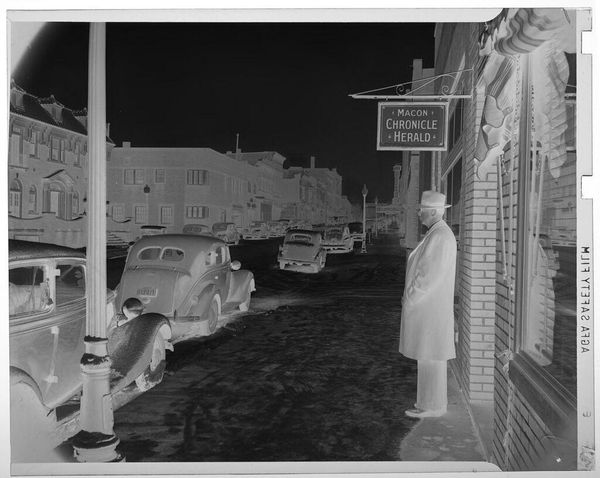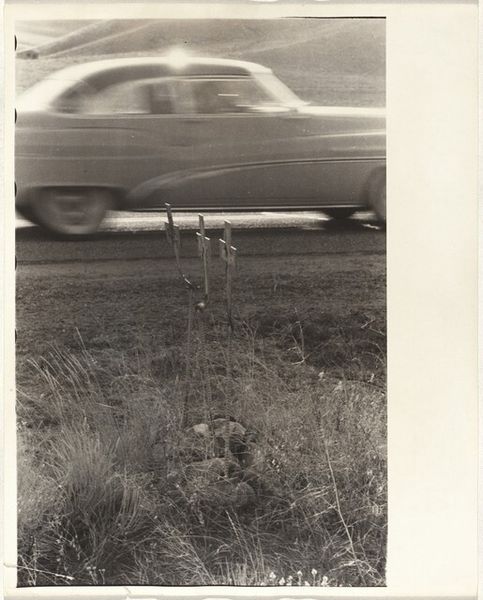
print, photography, gelatin-silver-print
# print
#
landscape
#
street-photography
#
photography
#
gelatin-silver-print
#
cityscape
#
modernism
#
realism
Dimensions: sheet: 25.3 x 20.2 cm (9 15/16 x 7 15/16 in.)
Copyright: National Gallery of Art: CC0 1.0
Curator: Here we have Robert Frank's "Automobile and buildings--San Francisco," a gelatin silver print taken in 1956. Editor: It strikes me immediately as melancholic, almost claustrophobic. The dominance of the car’s back end and the looming tower create a visual pressure. Curator: Frank's street photography is remarkable for its blunt, sometimes unsettling realism. Note how the car nearly fills the lower half, eclipsing a panorama of San Francisco in the background. The contrast is intentional, forcing us to consider what’s in the foreground versus what lies beyond. Editor: That imposing tower and the rows of houses, they represent societal structures. This car becomes almost an obstruction, a personal vehicle in front of social housing. Curator: And don't overlook the greyscale tones, drained of cheer, characteristic of Frank's subversive modernism. The image pushes against traditional picturesque landscapes, instead presenting a more critical observation of postwar America. Editor: I see it reflecting that moment of profound social changes. Automobiles defined new physical and social mobility, even freedom. Curator: Precisely! And his compositions were always deliberate interventions, often employing cropping or unusual vantage points. Note here the back of the car is pristine compared to what is behind it; the implication being there is nothing of any substance there. Editor: In his essay "Photography at the Service of Capitalism" from 1930 Walter Benjamin makes reference to the “atrophied, late capitalistic cityscape." Maybe the car and city together serve as emblems of the rapid urbanization of the era and the uneasy relationship between progress and isolation. Curator: And, of course, consider its impact in overturning established photographic conventions, inspiring generations of photographers to find art in the everyday. Editor: The piece resonates with me more as a portrait of a specific cultural moment than just as urban documentation. Thanks to your insights, my view has deepened significantly. Curator: Mine, too. Analyzing how Frank used formal elements and composition truly clarifies the emotional and social complexities he captured.
Comments
No comments
Be the first to comment and join the conversation on the ultimate creative platform.
